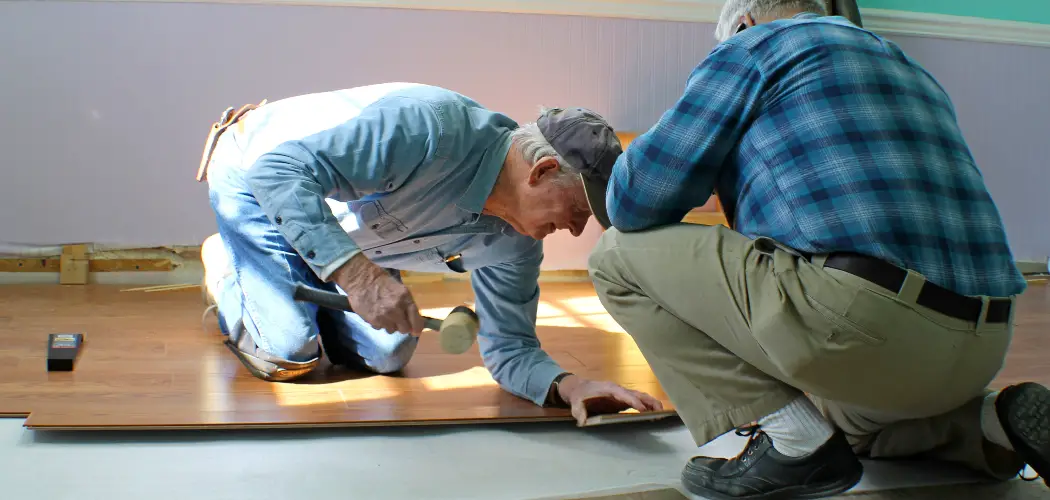Are you ready to upgrade your old concrete basement floor but don’t want to spend a fortune on expensive flooring? Laminate flooring is the perfect solution for transforming your basement into an attractive, comfortable space that still fits within your budget. Not only does it look great and comes in a variety of colors and styles, but it’s also easy to install!
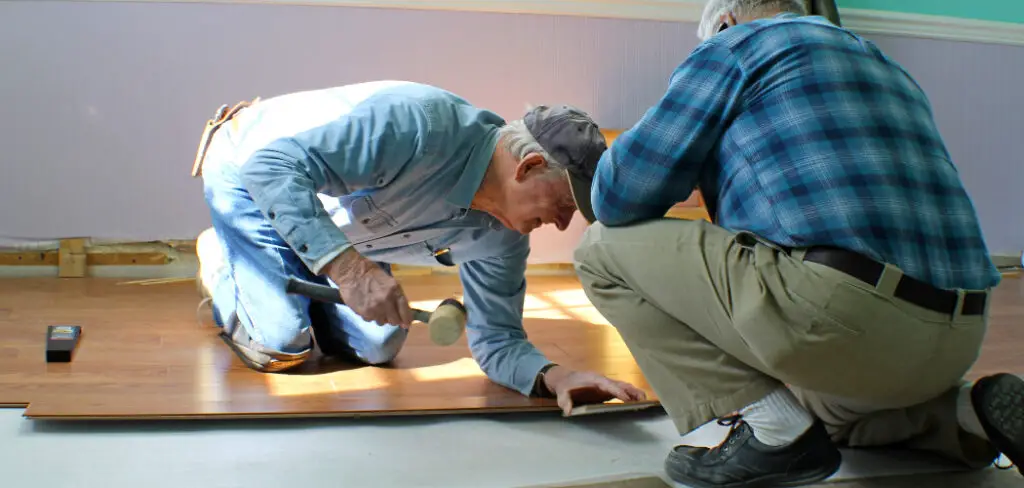
In this blog post, we’ll provide step-by-step instructions for how to install laminate flooring on concrete basement floor with minimal effort. Keep reading if you’re looking for an affordable way to improve your home’s appearance instantly.
Tools and Materials You Will Need to Install Laminate Flooring on Concrete Basement Floor
- Tape measure
- Pencil
- Jigsaw and jigsaw blades (optional)
- Hammer and nails (for securing the planks to the subfloor)
- Laminate flooring of your choice
- Underlayment
- Expansion gap spacers (to leave a 1/4-inch space around the perimeter)
- Flooring adhesive (optional)
Step by Step Guidelines on How to Install Laminate Flooring on Concrete Basement Floor
Step 1: Start by Measuring the Room:
Before getting started, measure the room you are planning to install laminate flooring. Take detailed measurements of your basement’s length and width, then add an extra 5% to cover any miscalculations or uneven walls. The extra 5% will help you avoid the dreaded “short plank” problem.
Step 2: Cut and Fit the Underlayment:
Once you have all your measurements, you can start cutting and fitting the underlayment. The underlayment helps protect your laminate flooring against moisture, so it’s important to make sure there are no gaps or holes in it. While cutting the underlayment, you can use a jigsaw and make sure to use the right blades for each material.
Step 3: Choose Your Laminate Flooring Planks:
Now it’s time to choose the perfect laminate flooring planks for your basement. Many different styles and colors are available, so take some time to find something that suits your taste and fits in with the rest of the décor in your home. The best laminate flooring planks are those that are durable and easy to clean.
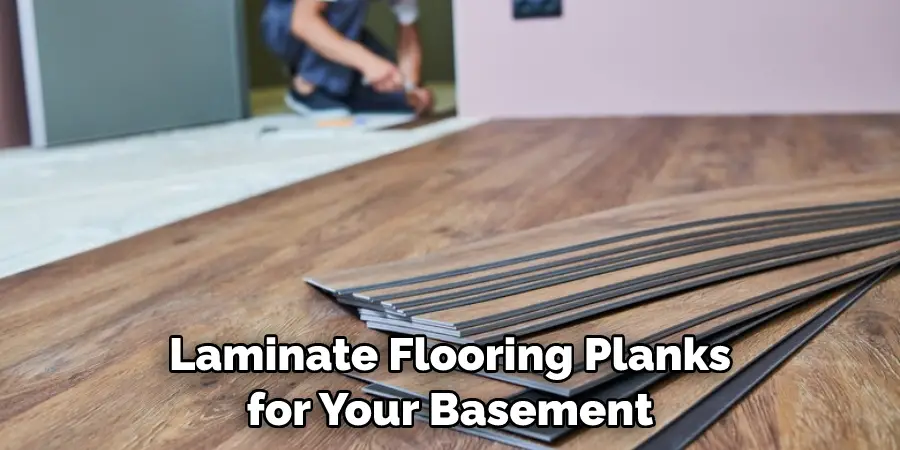
Step 4: Install the Expansion Gap Spacers:
Before you start laying down your laminate flooring planks, make sure to install the expansion gap spacers around the perimeter of the room. These will allow some space between your floors and walls so that your laminate flooring can expand and contract naturally with changes in temperature and humidity.
Step 5: Lay Down the Laminate Flooring Planks:
Once the expansion gap spacers are installed, you can start laying down your laminate flooring planks. Start in one corner of the room and work your way outwards. Use the hammer and nails to secure each plank to the underlayment. Make sure to leave a 1/4-inch gap between the planks for expansion and contraction.
Step 6: Finishing Touches:
Once you’ve laid down all of your laminate flooring planks, it’s time for the finishing touches. Use an adhesive on any joints that don’t feel secure, and use a damp mop to clean up any debris that may have been left behind.
Congratulations! You’ve just installed your own laminate flooring on your concrete basement floor! With proper care and maintenance, it should last you for many years to come. Enjoy the beauty of your new floors and the compliments you get from family and friends.
Additional Tips and Tricks to Install Laminate Flooring on Concrete Basement Floor
1. Make sure to check the manufacturer’s instructions before starting installation. Most laminate flooring requires an underlayment layer, a vapor barrier, and an expansion gap to allow for contraction and expansion of the floor with temperature changes.
2. If you have any large cracks or dips in your concrete basement floor, it is important to fill them in with a patching compound before you lay the laminate flooring.
3. To prevent any moisture from seeping up into the new flooring, it is essential to use a waterproof barrier between the concrete and the underlayment. A polyethylene sheet can be used for this purpose, though manufacturer instructions should be followed for any additional needs.
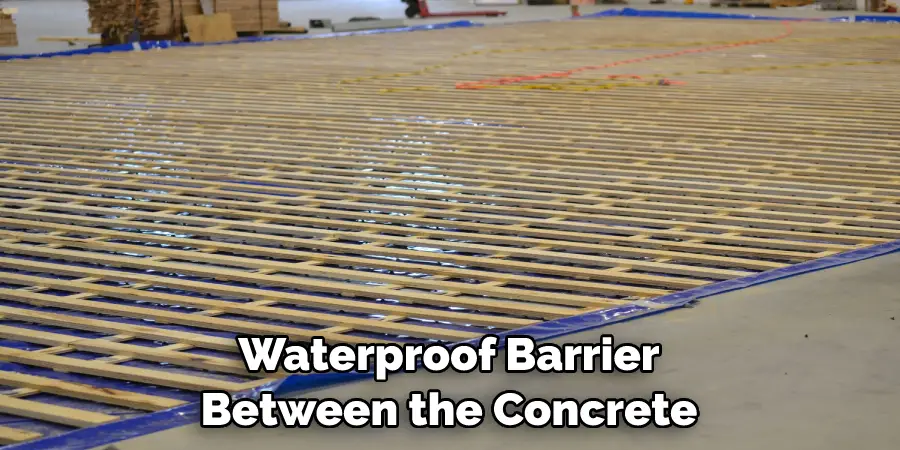
4. To keep the edges of laminate planks from separating and peeling up, it is important to use a sealant between each plank when joining them together. This will ensure that there are no gaps in the flooring and provide extra protection against water damage.
5. Before laying your laminate planks, it is important to ensure they fit in the room with no gaps or buckling. Lay out all of the planks on the floor and check for any problems before you nail them down.
6. To ensure that your new floors are level and secure, use a rubber mallet when tapping the planks into place. This will keep any buckling or gaps from forming due to uneven surfaces.
7. After you have completely laid your laminate flooring, it is important to clean the area to ensure no dust or debris has settled on top of your new floors. A vacuum and damp cloth can be used for this purpose, as any dirt left behind can lead to long-term damage.
Overall, installing laminate flooring on a concrete basement floor is not difficult if you follow the manufacturer’s instructions and take extra precautions, such as using a sealant between planks and covering them with a waterproof barrier. With just a few simple steps, you can have beautiful, durable floors that will last for years to come.
Things You Should Consider While Installing Laminating Flooring on Concrete Basement Floor
1. It is important to note that laminating flooring can be a challenging DIY project, so it is best to hire a professional if you are uncomfortable with this job.
2. Make sure the concrete basement floor is clean and free of debris before installation begins. Any existing dirt or dust should be removed before the laminate is laid.
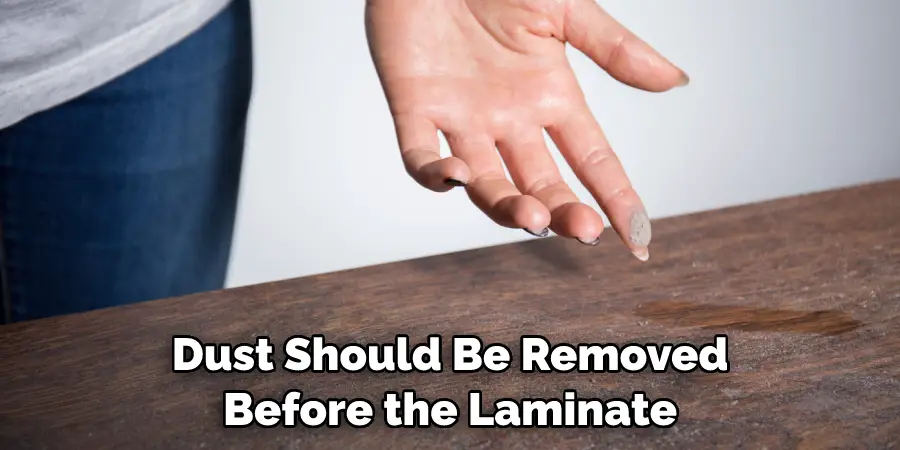
3. Be sure to properly measure and cut the laminating flooring to fit your space correctly. This will help reduce wastage as well as improve the overall look of your room after installation.
4. Provide a cushion under the laminate flooring with an appropriate underlayment or padding. This will help absorb some of the sounds and reduce echoing.
5. Take into account that traditional glues used to adhere laminates to concrete basement floors may cause moisture damage over time. Consider using construction adhesive instead, as it is designed for use with damp concrete substrates.
6. Install the laminate flooring in a staggered pattern. This will prevent any buckling or warping of the material over time due to changes in temperature or humidity levels in your basement.
7. Use an appropriate sealer after installation to protect the laminates against water damage. This will also help them last longer and look better for years to come.
8. Allow the laminates to acclimate for 24-48 hours in your basement before installation is complete, as this will allow for better adhesion and reduce the risk of buckling over time.
Following these steps will ensure that installing laminating flooring on concrete basement floors is done safely and correctly. With proper preparation, installation, and care, your laminate floors will look great for years to come. If you have any concerns or questions about the process of installing laminate flooring on concrete basement floors, be sure to talk to a professional for advice. Good luck!
Frequently Asked Questions
Is It Difficult to Install Laminate Flooring on a Concrete Basement Floor?
No, installing laminate flooring on a concrete basement floor is not particularly difficult. However, some preparation work must be completed first to ensure the installation process goes smoothly. This includes checking for moisture levels and making sure the subfloor is clean, smooth, and level. Additionally, it is important to use a vapor barrier underlayment and make sure that any gaps between the flooring planks are sealed.
Do I Need Special Tools to Install Laminate Flooring on Concrete?
Yes, you will need some special tools in order to install laminate flooring on a concrete basement floor. A hammer, chisel, pry bar, and circular saw are essential for installation. Additionally, you may need to rent specialized tools such as an industrial-grade stapler or a masonry bit when drilling into the concrete.

How Long Does It Take to Install Laminate Flooring on a Concrete Basement Floor?
The time it takes to install laminate flooring on a concrete basement floor depends largely on the room’s size and the subfloor’s condition. An experienced DIYer can typically complete a small room in one or two days. However, more complex installations may require additional time. It is important to allow extra time if you need to make any adjustments or fixes.
Conclusion
Installing laminate flooring in any home space does not have to be a daunting task; simply follow these steps for an easy and successful installation guide to know how to install laminate flooring on concrete basement floor. When dealing with a concrete basement, be sure to check humidity levels to ensure proper product performance. Overlap the barrier by at least six inches as well as make sure you purchase the correct type of concrete moisture barrier.
Additionally, use adhesive spacers or wood shims when needed on perimeter areas and apply laminate floor sealer for added protection. With careful preparation, thorough attention to detail, and all the proper materials, you can now proudly admire your new laminate flooring in the comfort of your own unique style – no matter what room it’s in!

